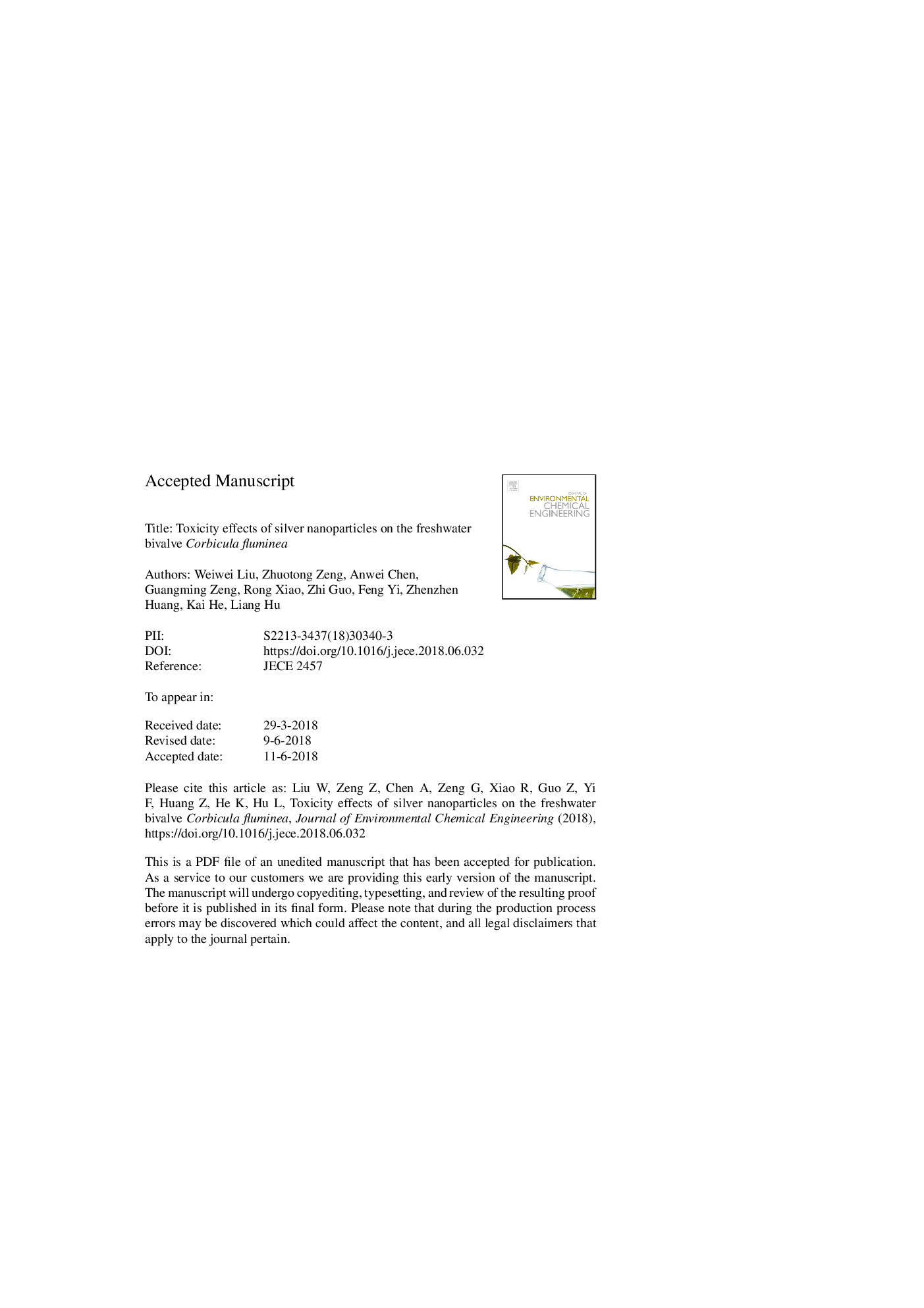| Article ID | Journal | Published Year | Pages | File Type |
|---|---|---|---|---|
| 6663873 | Journal of Environmental Chemical Engineering | 2018 | 40 Pages |
Abstract
Toxicity effects of silver nanoparticles (AgNPs) on the freshwater bivalve Corbicula fluminea (C. fluminea) were investigated through experiments. In this study, C. fluminea promoted the sedimentation of AgNPs and affected the fate and transformation of AgNPs. A series of biomarkers of C. fluminea in vivo were evaluated after 14 days exposure to various doses (0-2â¯mgâ¯Lâ1) of polyvinyl pyrrolidone (PVP) coated AgNPs. The levels of antioxidants increased obviously in 2â¯mgâ¯Lâ1 AgNPs treatments to protect C. fluminea from oxidative damage. Glutathione peroxidase (GPx) and glutathione (GSH) played important roles in tissues detoxification in 0.1 and 0.5â¯mgâ¯Lâ1 exposure, respectively. The biological behaviors (feeding rate, ammonia excretion rate) were inhibited at 0.1â¯mgâ¯Lâ1, inducted at 0.5â¯mgâ¯Lâ1, and inhibited again at 2â¯mgâ¯L-1 AgNPs, which indicated that AgNPs influenced the physiological metabolism of C. fluminea. Ag contents in tissue and shell of C. fluminea were much higher than blank groups. In addition, in vivo tissues were more sensitive to low AgNPs concentration compared with shells, indicating that C. fluminea could be used as a good indicator for AgNPs freshwater pollution. No Ag was detected in feces probably implying that nanoparticles had long gut retention time in C. fluminea. Overall, this study reveals the interactions between AgNPs and C. fluminea and provides important implications about the fate and toxicity of AgNPs in natural aquatic environment.
Related Topics
Physical Sciences and Engineering
Chemical Engineering
Chemical Engineering (General)
Authors
Weiwei Liu, Zhuotong Zeng, Anwei Chen, Guangming Zeng, Rong Xiao, Zhi Guo, Feng Yi, Zhenzhen Huang, Kai He, Liang Hu,
